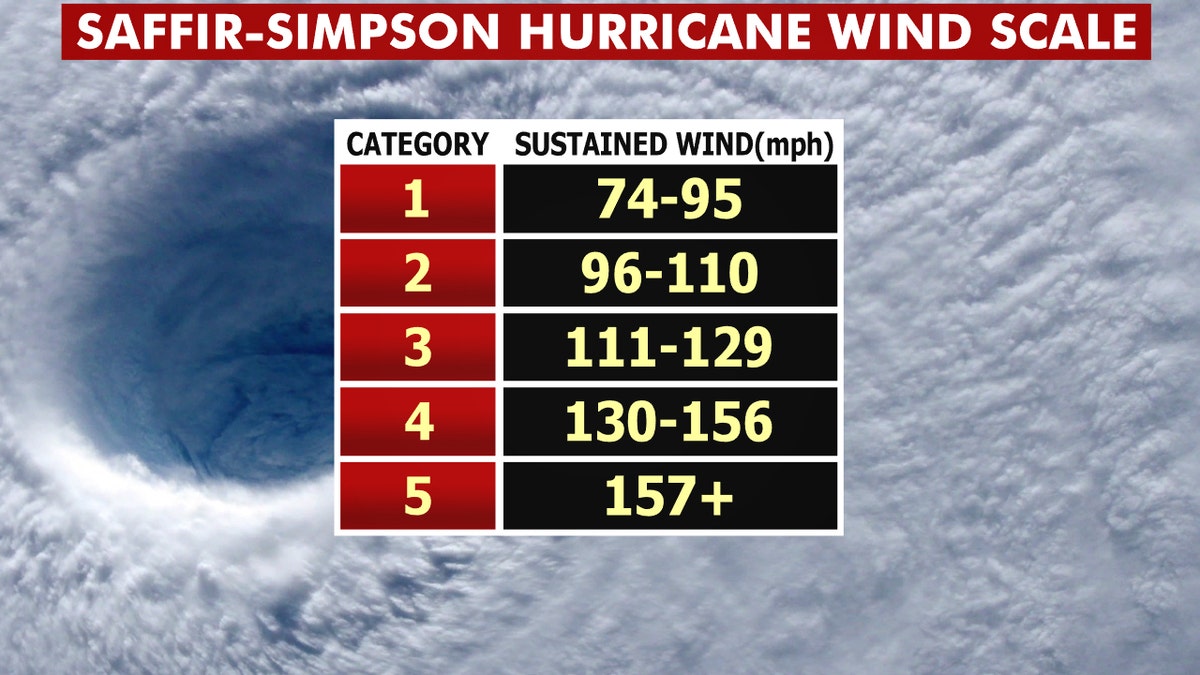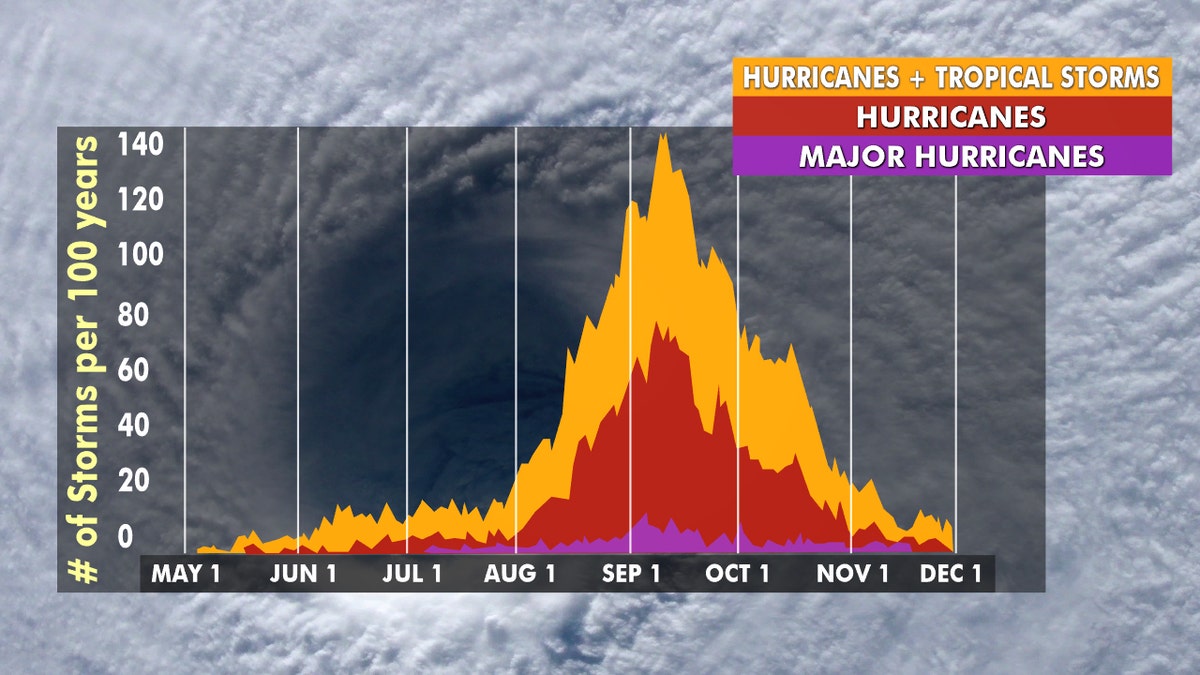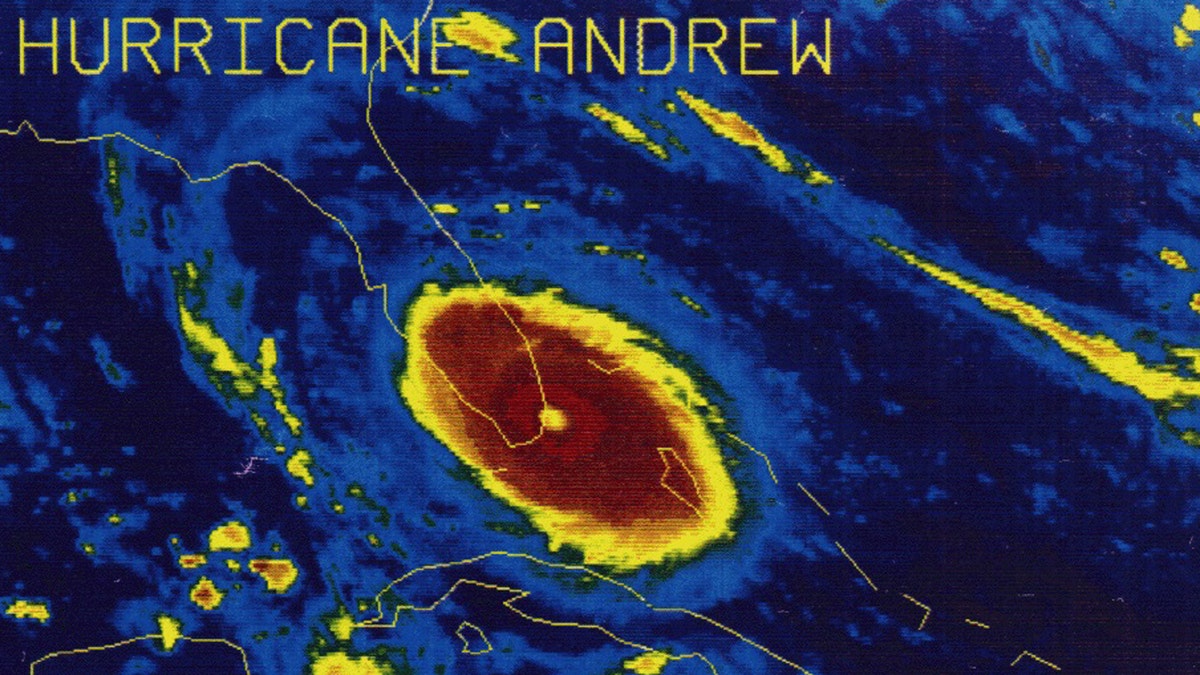Hurricane Irma: What does it mean to be a category 5 storm?
With Hurricane Irma bearing down on the Caribbean and the southern United States, meteorologist Adam Klotz explains the impact of a category 5 storm
Between early June and late November, coastal locations from Texas to Maine and even Hawaii are vulnerable to the wrath of hurricanes that can cause vast destruction.
On average, 12 tropical storms – six of which become hurricanes – form over the Atlantic Ocean, Caribbean Sea or the Gulf of Mexico during the Atlantic hurricane season, according to the National Weather Service.
In a typical two-year period, the U.S. coastline is struck by an average of three hurricanes, one of which is classified as a major hurricane with winds of 111 mph or greater. The storms can have winds ranging from 74 to over 157 mph, bringing destruction from storm surge and torrential rains that have the ability to cause massive flooding.
WHAT WAS THE WORST HURRICANE TO HIT THE US? HERE ARE THE COSTLIEST STORMS
Hurricanes have also claimed thousands of lives and caused tens of billions of dollars worth of damage.
So how strong can hurricanes get?
The U.S. National Hurricane Center (NHC) ranks hurricanes between 1 to 5 on what is known as the Saffir-Simpson Hurricane Wind Scale, which assigns storms a category based on sustained wind speed.
"This scale estimates potential property damage," the NHC explains.
Hurricanes reaching Category 3 and higher are considered "major hurricanes" because of their potential for significant loss of life and damage.

The Saffir-Simpson Hurricane Wind Scale. (Fox News)
"Category 1 and 2 storms are still dangerous, however, and require preventative measures," the NHC states.
WHAT WAS THE WORST HURRICANE TO HIT THE US? HERE ARE THE DEADLIEST STORMS EVER
Here is a breakdown of the Saffir-Simpson wind scale from the NHC:
Category 1: Sustained winds between 74 to 95 mph
- Hurricanes that are Category 1 storms can produce some damage while packing "very dangerous winds" according to the NHC. Theses storms can damage well-constructed frame homes, including impacts to the roof, shingles, vinyl siding, and gutters.
"Large branches of trees will snap and shallowly rooted trees may be toppled," according to the NHC. "Extensive damage to power lines and poles likely will result in power outages that could last a few to several days."
Category 2: Sustained winds between 96 to 110 mph
- Category 2 hurricanes are considered to have "extremely dangerous winds" that can cause "extensive damage" to well-constructed frame homes, with the threat of major roof and siding damage.

Hurricane season lasts from late August through early October. (Fox News)
"Many shallowly rooted trees will be snapped or uprooted and block numerous roads," the NHC states. "Near-total power loss is expected with outages that could last from several days to weeks."
Category 3 (major): Sustained winds between 111 and 129 mph
- Category 3 storms are considered "major" hurricanes where "devastating damage will occur," including "major damage" to well-built framed homes including removal of the roof decking.
STORM SURGE DURING HURRICANES: WHAT ARE THEY AND HOW CAN YOU PREPARE
"Many trees will be snapped or uprooted, blocking numerous roads," according to the NHC. "Electricity and water will be unavailable for several days to weeks after the storm passes."
Category 4 (major): Sustained winds between 130 and 156 mph
- Category 4 storms bring "catastrophic damage," with well-built framed homes at risk of losing most of the roof structure and/or exterior walls.
HURRICANE WARNING VS. HURRICANE WATCH: HERE'S THE DIFFERENCE
"Most trees will be snapped or uprooted and power poles downed. Fallen trees and power poles will isolate residential areas," the NHC states. "Power outages will last weeks to possibly months. Most of the area will be uninhabitable for weeks or months."
Category 5 (major): Sustained winds at 157 mph or higher
- The strongest hurricanes will leave "catastrophic damage" behind, with a high percentage of framed homes destroyed with "total roof failure and wall collapse."

Hurricane Andrew made landfall in Florida as a Category 5 storm on Aug. 24, 1992. (National Weather Service)
Besides downing powerlines and trees, these storms can create long-term power outages.
"Most of the area will be uninhabitable for weeks or months," according to the NHC.
CLICK HERE FOR MORE WEATHER COVERAGE FROM FOX NEWS
Only four Category 5 storms have hit the mainland U.S. since record-keeping began: the 1935 Labor Day hurricane that hit the Florida Keys; Hurricane Camille, which devastated the Mississippi coast in 1969; Hurricane Andrew, which hit South Florida in 1992; and Hurricane Michael, which was classified as Category 4 when it hit Florida’s Gulf Coast on Oct. 10, 2018, but was later reclassified as Category 5.
Hurricane Katrina in 2005 reached Category 5 in open water but struck the coast as a Category 3.
The Associated Press contributed to this report.






















